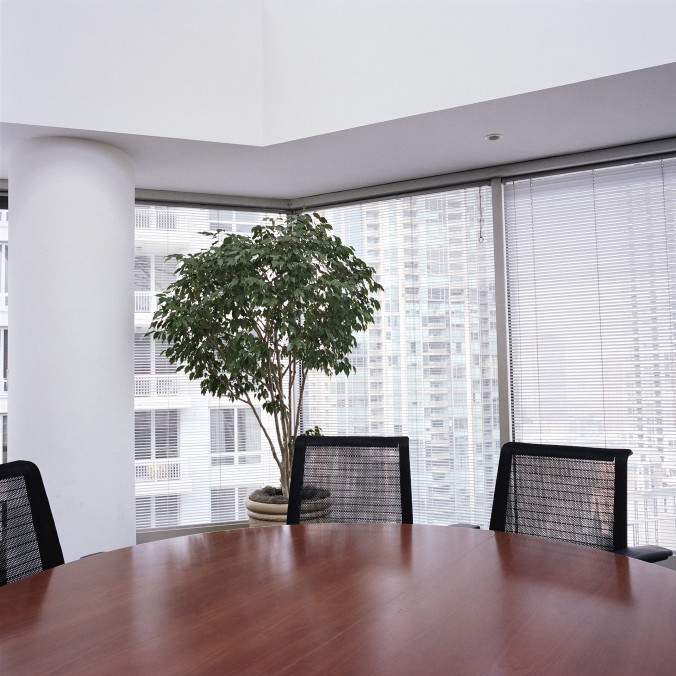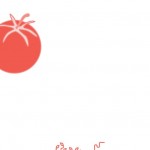The harnessing of nature into man-made indoor climates has been occurring for centuries via an array of vessels including terrariums, greenhouses and flower vases. In many places, structures were built around a living tree so as to minimize environmental impact, or simply for the sake of convenience. Ficus, bonsai and rubber trees have dominated living rooms and dens for decades. No matter the climate, we humans are a species that demands the outdoor environment be brought inside.
Regardless of the organism brought indoors, the maintenance and containment of a houseplant is key. It is expected that a plant match its container proportionally and that its extremities not exceed a certain margin of space. Fallen leaves and buds on the windowsill or coffee table must be removed swiftly. Soil is expected to be well-watered and the leaves positioned to receive a healthy duration of sunlight (many owners elect to occasionally rotate their pots to provide even exposure). Care through control on all fronts is the triumph of houseplant-ing.
The photographs of Ian Whitmore and Andrew Curtis show artists participating in an increasingly noticeable aesthetic focus: the inclusion of houseplants in their work. They are just two examples of a large shift toward including these ubiquitous pieces of our built environment in contemporary art. Moreover their work centralizes indoor spaces and other highly controlled, stark, almost-empty environments and landscapes (three-season porches, patios, lanais). These are often, at least in Whitmore’s case, commercial and institutional spaces. Curtis is more focused on examining houseplants in domestic settings. For both photographers, the foliage they look at spans a diverse register of species and health — some are fruitful and vibrant, others dying and losing their leaves.
There is something compelling about these organic wanderings, however. Both photographers’ works are simple and often far from any ideal notion of garden or elaborate adornment. To be sure, the term “houseplant” itself suggests a special marked quality differentiating from its outdoor, wilder counterpart. One of the fundamental differences in these terms is whether or not a pot or planter is used. These contain the roots, soil and watering. They also enable convenient transportation, depending on size and material, of course. Noticeable systems of containment will be the criterion for “houseplant” here. Yet the curbed aesthetics of those spaces remain. A majority of plants appearing in their works are clearly under some influence of control. Essentially, repression is aestheticized, restraint made tasteful. The play of control and natural tendencies are worth paying attention to when looking at Whitmore’s and Curtis’ pictures.
Whitmore’s work often frames the houseplant as folly in the built environment. His photograph “Nowhere #8005,” (2009), a ficus tree in a conference room, betrays any sense of obedience on the part of nature. The tree is off-center, toward the back of the room as seen from across a standard conference room table and chairs. It stands in waiting or perhaps delay, preparing to enter or exit from an important board meeting. The empty chairs personify the tree, as if to state “standing room only.” The natural object brings discomfort, almost prompting a desire to see it in a larger, more natural landscape. It does not match.
The folly here is riddled with intentionality. Regardless of how it got there, the tree was an attempt to make the space more inviting, more human. The tree stands as a pocket of nature, a small patch of wild earth. Whitmore’s approach slaps away all politeness with a knowing hand, abhorring the plant’s supposed pleasantness in favor of an awkward yet latent aggression (the ficus tree is on file with United States Forest Service as a species with rapid-growing and invasive roots). The tree, as the photograph shows it, could be a channel of aggression and otherworldly strength within the limited behavioral bounds of corporate America. It is a totem of what is to be fought for. Could it stray from its compliant positioning? Whitmore could very well have given us something to believe in.
In other cases, houseplants occurring in Whitmore’s work may serve as a unifier among various locations and representations of nature shown in the photographs. The larger body of work in which his plant photographs appear is titled “Nowhere.” Here, a collection of scenes traverse 22 nondescript locations, in each of which a plant is evoked or an actual plant is found in surrounding content. Over time, viewing these photographs in a sequence makes a game of spotting the houseplant (although they are easy to find). One realizes that the plant (or the idea of one) is a single thread that runs through the work and each instance must be located.
Andrew Curtis exposes the plant in full-frontal view, making it central to the work with minimum content on the outskirts of the image. Curtis’ work seems to recall the idealized specimens of “Sunset” periodicals and the more extensive full-color landscaping manuals printed under the same name. Here, however, the plants have been isolated from their other surroundings by the use of Rotring ink. Their cut-out shapes evoke space with no other grounding features (see “INTERNATIONAL LAWNS (Survival Programmes)”). The work provides a certain sense of dependability given that the plants dictate the black-hole-like space that encapsulates them. Curtis presents the plants as a means for orienteering, predicated upon the unseen prime meridian of conventional landscape arrangement and design. In other words, a sense of space is discernable. The quest prompted in these photographs is not to find the element of nature but to see its containment and its possibility.
It could be that Curtis is calling to mind the notion of control through his strict photographic treatments. At first glance, there seems to be no escape for the foliage. Vibrant and near artificial renderings (i.e., highly-processed) create a second layer of control/containment. Yet, the distortion that appears in these techniques also brings with it a sense of potential. Nature is held captive but only visually. It could be that a removal of surrounding content alleviates literal containment and allows for freer growth, something wilder. Maybe Curtis’ work seeks not to show how nature has been tamed but how it can be liberated within some of the most intensely regimented spaces.
The larger implications of houseplants in various media have yet to be formally unpacked. Regardless of context, they operate as a starting place. Perhaps this is their larger significance: they are looked at, almost depended upon, by the viewer as a bellwether for understanding the conditions shown in the rest of the work. They are moments of nature, adaptable and clear representations of care (or lack thereof). Therefore, the plant becomes not only our point of access into the work, but also a determining factor for how the rest of the scene is doing (or what it is trying to do).





















